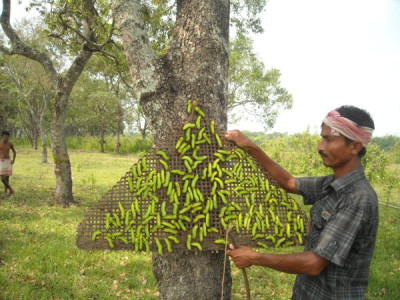In Assam, Muga Leta refers to the silkworm (Antheraea assamensis) that produces the world-famous Muga silk, known for its natural golden luster and durability. Found exclusively in Assam and certain parts of Northeast India, Muga Leta thrives in the region’s unique climate and feeds primarily on Som and Soalu plant leaves.
In Assam state, there is a very tasty recipe prepared with Silkworms, which the native people called Muga Leta recipe.
The life cycle of Muga Leta begins when the moth lays eggs, which hatch into larvae (caterpillars) that feed on host plants until they spin golden-yellow cocoons. These cocoons are carefully harvested by skilled sericulture farmers, and the silk extracted is woven into exquisite fabrics such as Mekhela Chadors, sarees, and traditional Assamese attire.
Muga silk, and by extension Muga Leta, holds immense cultural significance in Assam. The silk’s natural sheen improves with age, making it a treasured heirloom in Assamese households. Because Muga Leta can only survive in pollution-free environments, its rearing also reflects the region’s harmonious balance with nature.
Recognized under the Geographical Indication (GI) tag, Muga silk is not just a textile but a symbol of Assam’s heritage — and it all begins with the humble yet extraordinary Muga Leta.


